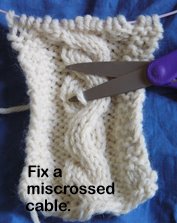Our second riverboat stop was designed to give us a taste of the culture of the Athabaskan people who have lived in the interior of Alaska for over 10,000 years.
We saw some domesticated reindeer. They are genetically the same as caribou, but are tamer. Like horses, if given the opportunity, they willingly and successfully return to the wild.
Both genders grow antlers. The boys have bigger ones than the girls, but drop them at the end of the rutting season, before winter. Girls keep theirs into the winter, so you know who pulls Santa's sleigh.........

This guy settled down for a siesta with his antlers 6" from the fence. I decided to reach through and touch. Very soft, and he didn't seem bothered by the intrusion......

I liked the pattern of her antlers and their shadows........

Our guides at this location were Athabaskan. They showed us the sorts of shelters people used before contact with Outsiders, and after, and showed us pelts from some of the animals trapped in the winter.
I didn't get pics of the shelters, but the pelts, you bet. I got to touch these, too.
Wolf.

Red fox.

Silver fox. Very soft and lovely to touch. I can see why people wanted these skins, and I hope that people will satisfy themselves with soft lovely warm things made of cashmere and quiviot and wool, and leave the fur on the animals. Ok, I guess we can make an exception for the subsistence of people whose direct ancestors have been living in Alaska for millenia.

Museum quality Athabaskan traditional dress. The maker was on hand to enjoy our appreciation of her work and to answer questions.


As we traveled, people from the different First Nations (though none of them described themselves that way) came to talk to us about some aspect(s) of their cultures. I kept wondering when they would talk about how much we of European descent trashed everything (I have been to the Museum of the American Indian in Washington, DC, and that is the most constant theme, I imagine rightfully so), but we never heard anything like that at all.
We heard about how things were different, but it was things like "sturdier shelter" rather than "killing off all our game" or "damming our waters" or "marching us off from Florida to Oklahoma"..........
I felt (correctly or not) that, like other Alaskans we met, the First Nations people want to share their love of Alaska, and the roots of that love, with us Outsiders.
The woman who spoke to us in Denali talked about her culture's way of coping with grief via potlatches. She lost her son when he was 21, and was devastated. Her grandfather sat her down for a serious talk, and told her she must give a potlatch in her son's memory. The giver of a potlatch must stockpile a huge number and assortment of gifts, as every attendee leaves with a gift. She described taking two years to make blankets, slippers, and many other things. She described the way the elders made a song for her, about her son. About the things that defined him, like being a fast runner and a lucky hunter.
She learned the song, "word for word, beat for beat," and sang it every morning and evening as she prepared for the potlatch.
The final time she sang the song was at the potlatch, and then it was time to not sing that song again, but to move on.
It seemed to me that she was sharing not only a part of her culture, but a way of coping with a horrible drastic event that could happen to any of us. It was clear that she had a big impact on people who heard her speak. I saw multiple women speak to her when she was done, and thank her.
It seemed to me that she could not have chosen a better topic to demonstrate that we all share the same sorrows, and that each culture has something to offer everyone, in the way of dealing with the slings and arrows of cruel fortune........
With that bit of philosophizing, we'll disembark from the paddleboat.
This guy was on the floor of the boat right in front of our seats. He was about an inch from stem to stern, not including antennae.

You knew I couldn't go a day without showing you flowers. Cultivated ones, outside the riverboat's shop.

In order to facilitate chronological traverse of these posts, a link to the next one is here.
.

















4 comments:
It was most interesting and so very sad to read about the lady from Denali's potlatch. I'll always remember her poignant story.
Re the bug in your boat; it looks like the bug that came to my garden pond on the first day of its use. The pondmaker man called it a waterboatman or also a backswimmer. He said it was a good omen, however, it went away and i've never seen one since.
I, too, will always remember it.
I think she made an excellent choice of stories to tell us. I bet that no one who hears it will forget....
Interesting about the bug! Thanks for the info! Makes sense that a water-type bug would be seen on a riverboat!
I'm sorry but silver fox are domestic and not native to Alaska. they are a variation of the red fox, grown for fur. We also do not have a Gray fox. We have arctic Fox, and they are native.
Ok.
I can't remember, this many years later, whether the pelts were labeled. I rather suspect they were (I'm not in the habit of making stuff up -- and I wouldn't know wolf from fox, without a label....), but I don't remember.
Would arctic fox ever be a blend of black and white, like the pelt in the pic?
Post a Comment